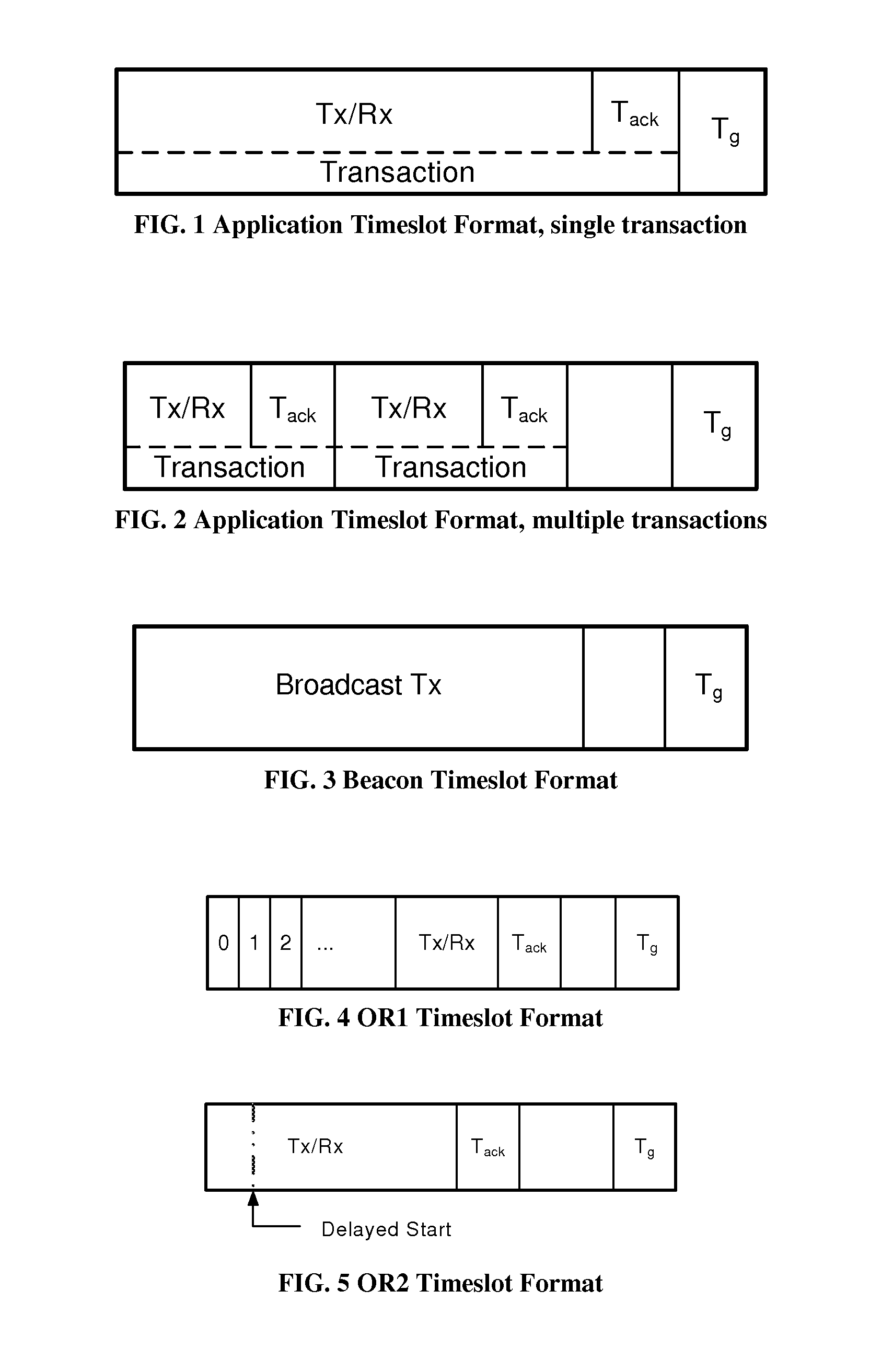Maintenance of time slot usage indicators and self-organizing wireless networking
a time slot usage indicator and wireless networking technology, applied in the field of self-organization of wireless networking and time slot usage indicators, can solve the problems of difficult to coordinate power saving (sleep) modes of devices, bss is naturally delineated and limited, and 802.11 is not suitable for applications, so as to reduce the duty cycle and achieve high network throughput
- Summary
- Abstract
- Description
- Claims
- Application Information
AI Technical Summary
Benefits of technology
Problems solved by technology
Method used
Image
Examples
##p embodiment
NapMap Embodiment
[0025]Described below is an embodiment, which will be referred to as the NapMap protocol in this disclosure, of communicating through a wireless tree-topology network with the medium access control being disclosed. In this embodiment, network nodes form a logical tree topology that has one root node, and all non-root nodes transport their application data to the root node. Such a communicating arrangement can be found in sensor networks wherein nodes report their sensor data to a single collection point node. A tree topology together with the root node designation defines the parent-child relation between some pairs of nodes. A pair of nodes connected by an edge of the logical tree topology is said to be in the parent-child relation. The root node is a parent of every node that is connected to the root node by an edge (in the tree topology), and every node that is connected to the root node is a child of the root node. Two non-root nodes connected to each other by a...
PUM
 Login to View More
Login to View More Abstract
Description
Claims
Application Information
 Login to View More
Login to View More - R&D
- Intellectual Property
- Life Sciences
- Materials
- Tech Scout
- Unparalleled Data Quality
- Higher Quality Content
- 60% Fewer Hallucinations
Browse by: Latest US Patents, China's latest patents, Technical Efficacy Thesaurus, Application Domain, Technology Topic, Popular Technical Reports.
© 2025 PatSnap. All rights reserved.Legal|Privacy policy|Modern Slavery Act Transparency Statement|Sitemap|About US| Contact US: help@patsnap.com


